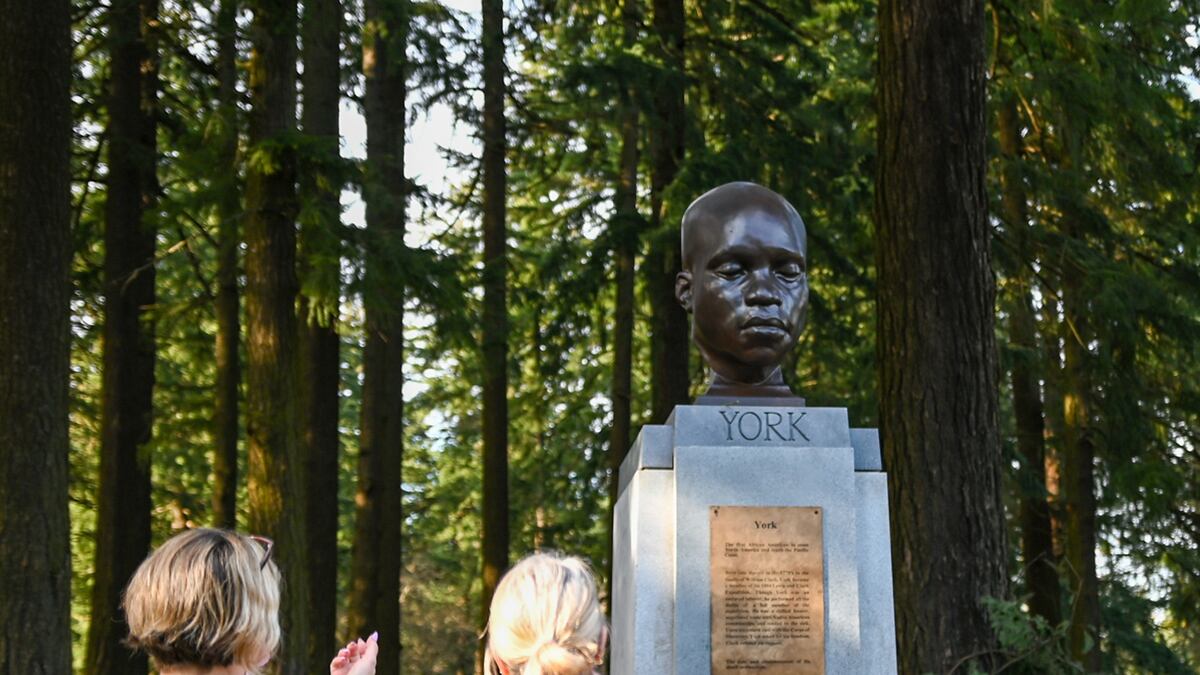As Portlanders continue to mourn the destruction of York, the statue which once sat atop Mount Tabor, now might be a good time to learn more about the man that work depicted—who travelled with Lewis and Clark on their expeditions, as William Clark’s slave.
Last week the city’s Regional Arts & Culture Council released a fairly listenable recorded discussion between PSU Professor of History and Black Studies Darrell Millner and the unidentified artist who created York. RACC’s Public Art Director Kristin Calhoun served as moderator.
What unfolds is almost a syllabus of many larger ideas. Millner discusses the different ways York has been portrayed across different eras.
“Every subsequent generation of American culture had a way of defining York that seemed to reduce that contradiction between the reality of a Black man who was capable of great deeds, who was capable of heroic actions, and who also was contained in that institution of slavery,” Millner says.
The unidentified artist touches on ideas of artistic ownership and the overlap between public art and protest. The artist describes placing the bust—under cover of night—and then trying to think of the ownership as transferred to the park and the bust’s viewers.
“I’ve been profoundly moved by the people I’ve seen up there, particularly teachers. I’ve seen so many teachers who have put the York story into their curriculum and brought their students up to York,” the artist relates.
Something surprising about the conversation between Millner and the unidentified artist is the realization that the artist chose to sculpt York because he actually knows Millner and has heard Millner speak about York before, though they never say under what circumstances.
Listen to the whole thing here.
